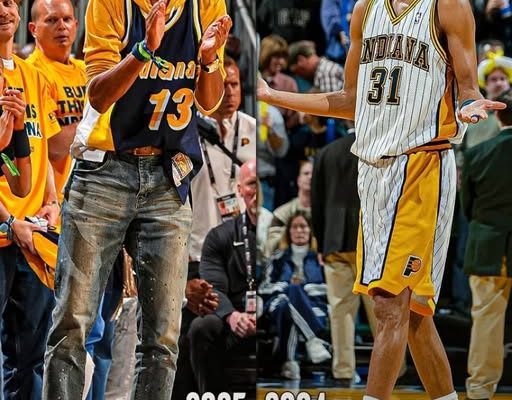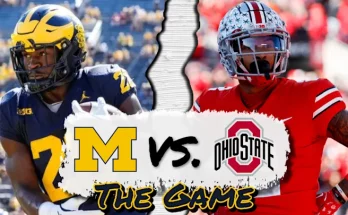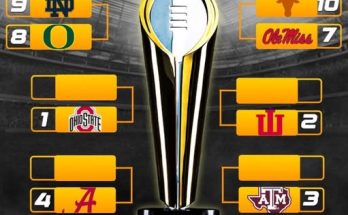During the NBA Finals, few things draw more subtle attention than the footwear of former players and legends sitting courtside or contributing to the broadcast. For some, the sneakers are a quiet nod to history. For others, they’re loud tributes to their playing days, dripping with nostalgia and personality. Reggie Miller, the Hall of Fame sharpshooter turned TNT analyst, has been turning heads this postseason not just for his basketball insight, but for his unmistakable choice in kicks—his own personalized Air Jordan 19 SE PE, famously dubbed the “Killa 31.” It’s more than just a sneaker. It’s a time capsule, a statement piece, and a rare sight that bridges generations of NBA fans.
The moment Miller stepped onto the Finals coverage wearing the “Killa 31”s, longtime NBA enthusiasts instantly recognized the connection. This wasn’t some random retro throwback. It was a resurrection of the exact silhouette Miller wore during his swan song in the 2004-05 season, when he retired after 18 incredible years with the Indiana Pacers. Designed as a Player Exclusive (PE) colorway of the Air Jordan 19 SE, the “Killa 31” was a quiet tribute to one of the NBA’s most lethal perimeter scorers. Known for his unshakable confidence, late-game daggers, and fierce rivalries, Miller’s nickname—“Killa”—was a perfect summation of his on-court persona. The number 31, emblazoned on the heel of the sneaker, reflects his career-long jersey number with the Pacers, a number that has since been retired by the franchise.
The shoe itself is steeped in Jordan Brand history. The Air Jordan 19 debuted in 2004, and was notable for its futuristic design and use of unconventional materials. Featuring a sleek laceless design with a Tech Flex shroud and velcro strap, the shoe’s appearance was bold, almost divisive, but unmistakably ahead of its time. Miller’s PE version took that model and stripped it down for performance—the SE (Special Edition) version eliminated the shroud for a more traditional lacing system, catering to athletes who preferred a quicker fit and feel. His exclusive pair was decked out in Pacers colors—white, navy, and hits of yellow—and prominently featured “Killa 31” stitched into the heel and tongue. Seeing them resurface nearly two decades later during the most watched basketball series of the year sent a ripple through sneaker communities and NBA lore alike.
What made this moment even more impactful was the context in which Miller wore them. Unlike many former players who drift away from their playing days, Miller has always retained a deep connection to the sport. As a broadcaster, he hasn’t shied away from bringing that same tenacity and flair he had on the court to the microphone. And in wearing the “Killa 31”s again, it’s as if he reminded everyone, without a single word, just who he was: a cold-blooded competitor who never feared the moment. He wasn’t simply a shooter—he was a killer, and the Finals were often where he wished he could have made his own title run. Though Miller never won an NBA championship, his playoff legacy is secure. Who can forget his eight points in nine seconds against the Knicks? Or his numerous three-point barrages that left defenders shaking their heads and fans jumping out of their seats?
By stepping into those shoes once again, Miller was doing more than flexing for the cameras. He was asserting the identity he carried through his career. At a time when new generations of stars like Jayson Tatum, Luka Dončić, and Anthony Edwards are reshaping the narrative of the league, Miller’s sneaker choice was a gentle reminder of the lineage they come from. There was a time when there was no three-point line dominance without invoking Miller’s name. Before Stephen Curry, it was Reggie who stood atop the mountain as the three-point king. His shooting form was the textbook standard. His movements off the ball—a ballet of screens, sharp cuts, and footwork—set the precedent for modern marksmen.
And it’s no coincidence that Jordan Brand was the vehicle for this nostalgia. Though Miller was never officially a Jordan athlete during his playing career, the brand has long held a reverence for players who embody certain intangibles: mental toughness, competitive drive, and a flair for rising in the biggest moments. Miller’s PEs have always been coveted by sneakerheads for that reason. They weren’t mass-produced. They weren’t worn by anyone else. They were Reggie’s alone—a rare fingerprint on an already exclusive culture.
Now, in an era when sneaker culture is as mainstream as the game itself, these moments of authenticity stand out. The Finals stage has become an extended runway of expression—players and commentators alike use it to tell stories. From LeBron James debuting unreleased Nike tech to former greats paying homage through retro kicks, there’s a dialogue happening through footwear. And in that dialogue, Miller’s “Killa 31”s spoke volumes. They whispered tales of Eastern Conference wars, of Madison Square Garden silencing threes, of rivalries built not on drama but on cold execution.
More than just a memory trip, Miller’s choice has sparked new interest in Player Exclusives of the past. Sneaker forums and social media buzzed with excitement after each TNT segment, with users trying to identify the pair and confirm their origins. Some collectors, aware of the rarity, began sharing archived photos of Miller’s last season, showcasing moments where the Air Jordan 19 SE PE was visible in high-stakes games. Younger fans, unaware of Miller’s influence, dove headfirst into highlight reels, searching for context to match the kicks. The ripple effect was real, and that’s the beauty of legacy—it finds new ways to echo.
Reggie Miller never needed validation from a ring to confirm his greatness. He made his mark in ways that few could replicate. And now, with the Finals as his backdrop and millions watching around the world, he chose to lace up a relic from his personal archive and let the shoes do some of the talking. In doing so, he bridged the past and present seamlessly, showing that the legends don’t fade away—they just evolve.
Miller’s presence in those “Killa 31”s also rekindled conversations around personalized performance shoes and how they’ve changed over the years. In today’s game, many stars get signature shoes, but PEs like Miller’s hold a unique place. They’re not made to sell; they’re made to speak. They tell the story of the player who wore them—the quirks in design, the colors, the personalized embroidery—they’re essentially storytelling tools wrapped in leather and rubber. And that’s part of the mystique that surrounded Miller’s appearance this Finals season. He wasn’t endorsing a brand. He was endorsing his own history.
With the NBA’s popularity at an all-time high and the global sneaker market growing exponentially, there’s a hunger for authenticity. Fans want more than just products—they want stories. Miller’s decision to revisit his iconic PE was one of the most organic storylines the Finals could have hoped for. Amidst all the narratives about matchups, coaches, and legacies, here was a man who already carved his place in basketball history, quietly reliving it in front of millions, one step at a time.
As the Finals come to a close, whether you were rooting for one team or simply tuning in for the love of the game, it was hard to miss the subtle flex of a legend revisiting his past. And in those “Killa 31” Air Jordan 19 SE PEs, Reggie Miller didn’t just remind us of his career—he reasserted it with elegance, precision, and the kind of killer mentality that only a select few have ever possessed. The shoes weren’t just a nostalgic nod. They were a statement. And that statement, like Reggie himself, was deadly accurate.



